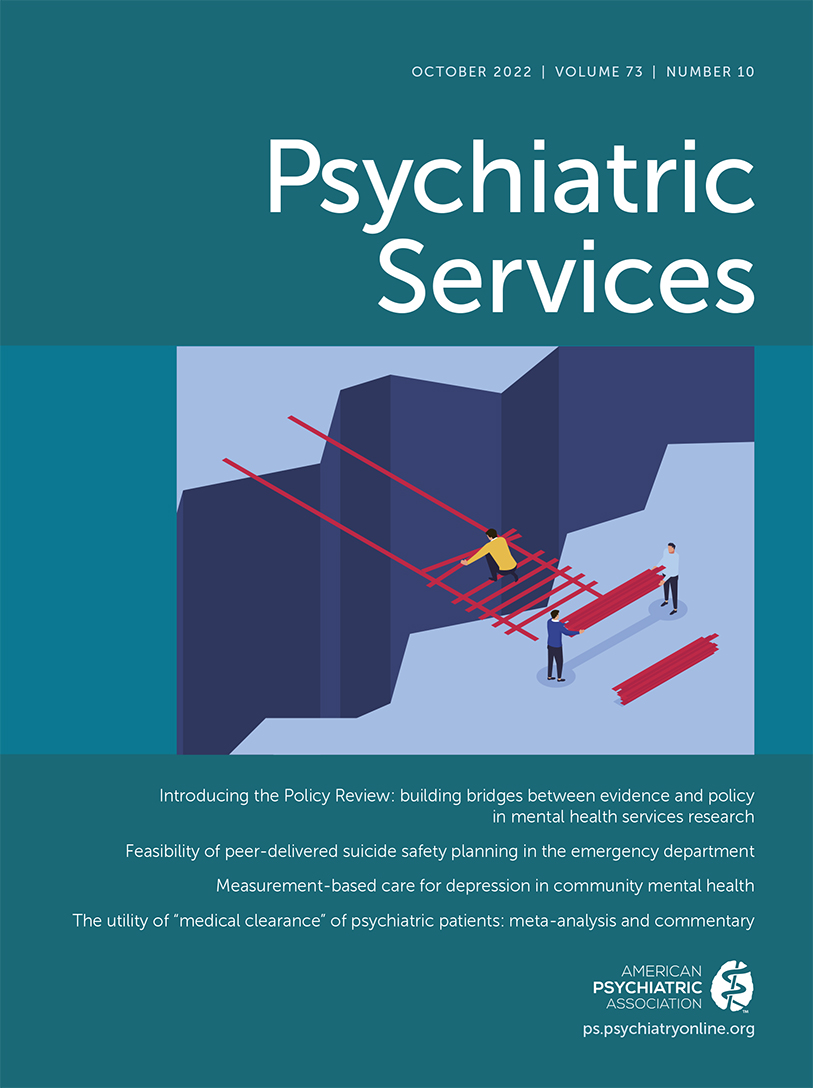The Complex Task of Measuring the Value of Laboratory Investigations and Other Diagnostic Tests: Commentary on Srivastava and Nair
Srivastava and Nair (1) have built a compelling argument that the routine use of laboratory investigations, imaging studies, and other diagnostic tests for adults with psychiatric symptoms in medical emergency rooms, psychiatric emergency rooms, and inpatient settings is often low yield, rarely changes management, and is unlikely to reveal new information that is not already known from the history and physical examination. Their review provides a helpful balance to existing literature that teaches physicians always to consider the many nutritional, metabolic, immunologic, neoplastic, toxic, traumatic, and other causes of psychiatric symptoms (2), and it helpfully pushes back against a hospital culture that tends to expect screening labs for all patients as the standard of care.
The review bumps up against the difficult question of how best to define and measure the value of these investigations. The authors use definitions of utility and significance and report a measurement of yield that may not fully capture some important ways that investigations are utilized to advance patient care. If the value of investigations is underrepresented, it will be difficult to convince clinicians to change their practices.
For example, investigations can be simultaneously low yield and high value. So-called “can’t miss” diagnoses can fall into this category (e.g., pregnancy, cardiac arrhythmia, hypothyroidism, anemia, and drug toxicity). Especially when investigations for these conditions are low cost and not particularly burdensome, clinicians appropriately have a low threshold for ordering them. If one in a hundred investigations returns positive results, that is still plenty of value to justify ordering them.
Investigations can also have value without necessarily meeting the authors’ definitions of utility (investigations resulting in a change in diagnosis or management) or significance (findings not otherwise detected by history or physical examination). Arguably, these definitions highlight unexpected abnormal findings and downplay the importance of normal results, baseline measurements, confirmatory tests, and trending tests as guides to clinical care. Notably, a study of primary care physicians reported that the most common reason physicians ordered investigations was to “exclude disease and reduce the physician’s uncertainty” (3), a practice that is primed to generate high rates of normal results that are still quite valuable. Additionally, Whiting et al. (4) described a wide variety of reasons clinicians order investigations, few of which map cleanly onto the authors’ definitions of utility or significance.
Another aspect of value—especially relevant for emergency and inpatient psychiatrists—involves using the results of investigations to facilitate conversations about where to transfer patients and when. Abnormal results can facilitate a transfer to inpatient medicine, and normal results can facilitate a transfer to inpatient psychiatry. Psychiatric facilities with limited medical resources have a reputation for requiring that patients be scrutinized for medical stability prior to transfer (5), a practice that has only intensified during the coronavirus pandemic. For better and for worse, laboratory studies and other investigations (e.g., COVID test results, chest X-ray, electrocardiogram, and oxygen saturation) are core elements of the vocabulary clinicians use when negotiating where patients should go and when. Even when the results of investigations do not change the overall clinical course, having results in hand can still add value by reducing friction and facilitating timely and appropriate transfers.
These comments are not intended to say that all investigations add value. The authors’ key point—that investigations are overutilized in emergency and inpatient settings—is uncontroversial. There are wasteful practices that can and should be eliminated. Rather, these comments are intended to illustrate the complexity of defining and measuring value. Without a comprehensive understanding of the value of investigations (both real and perceived value), it will be difficult to convince clinicians to let go of some deeply embedded practices and persuade them to order fewer investigations.
1 : Utility of investigations, history, and physical examination in “medical clearance” of psychiatric patients: a meta-analysis. Psychiatr Serv 2022; 73:1140–1152 (in press)Abstract, Google Scholar
2 : Down the rabbit hole: emergency department medical clearance of patients with psychiatric or behavioral emergencies. Emerg Med Clin North Am 2015; 33:721–737Crossref, Medline, Google Scholar
3 : Reasons for ordering laboratory tests and relationship with frequency of abnormal results. Scand J Prim Health Care 2010; 28:18–23Crossref, Medline, Google Scholar
4 : A review identifies and classifies reasons for ordering diagnostic tests. J Clin Epidemiol 2007; 60:981–989Crossref, Medline, Google Scholar
5 : American Association for Emergency Psychiatry task force on medical clearance of adult psychiatric patients: part II: controversies over medical assessment, and consensus recommendations. West J Emerg Med 2017; 18:640–646Crossref, Medline, Google Scholar



